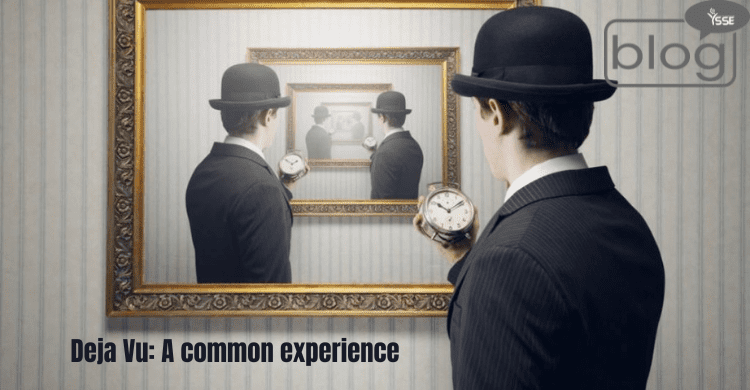‘Life is like a box of chocolates’ is a famous line which was perceived by Forrest Gump. And such chocolates are our day-to-day experiences which comprise and shape our lives. From the start of our day with a regular morning coffee to getting asleep, we tend to feel different and indifferent attributive events that relate to our regularity of life periods. But among such events, ‘Deja Vu’ stands out uniquely. This frequently questioned event, which is yet to be solved and explained with the most basic logic, remains one of the most mysterious phenomena that our lives make us ponder.
Termed by French philosopher Emile Borac, the terminological meaning of ‘Deja Vu’ is ‘Already Seen’. When someone perceives an event, they have a feeling that the event had occurred somewhere else and seems familiar. But they can’t remember exactly where or when. Such duality is a proper example of ‘Deja Vu’. But such events don’t define that the memory recollection of the human brains are quite drastic, rather as common figures, explained by the world-renowned neuroscientists.
Our brain contains a lobe termed Temporal lobe which functions for long-term memory processing. Another part named ‘Hippocampus’ also plays crucial roles in memory recall of our brain. To explain ‘Deja Vu’, lots of theories are brought up to summarize a convenient solution to this mystery. For example, the ‘Hologram Theory’ is quite popular as it resonates with hologram technology to relate with this phenomenon. Also theories like ‘Dual Processing’ are shared, where it is seen that sensory motor organs differentiate senses while receiving those senses a bit late due to unknown reasons. Multiple physicists like Michio Kaku have proposed some theories related to quantum physics which explains a lot to ‘Deja Vu’. Decoupled multiverses can also be an explanation for this mystery if string theory can be evaluated properly through experiments in the fields of physics. Familiarity decoupling is also another feature to be added in this experience.
Experiments have been ongoing to discover the real reasons behind this mystery since the start of the decade. Multiple made-up ‘Deja Vu’ scenarios are made by the scientists and MRI technology is used to see what happens to the brain when such events occur. Patients who face these events on a daily basis are known as Epileptic Patients (the disease is so-called ‘Epilepsy’). They are being experimented to understand these situations. Virtual Reality has also come in handy, as people have discovered through it that spatial differences, that is. familiarity of the structures of the objects, can play a vital role in such phenomena. In multiple research papers, patients have faced a common symptom called ‘dreamy states’ where they feel that their minds get disconnected from the outer world and perception gets detached from the world while facing ‘Deja Vu’. Misperceived memories are better reasons, found by the scientists, to evaluate and justify such symptoms.
This mysterious experience has inspired many fictional works and movies. The Matrix (1999) has vigorously used this concept to fabricate incidents like ‘The Glitch in the Matrix’. A game named ‘Driver: San Francisco’ has used this concept in its missions as well. Other similar experiences are identified that ties up with ‘Deja Vu’ e.g. ‘Presque Vu’, ‘Jamais Vu’ etc. These experiences are also quite unique yet regular and carry significant value in the realm of Psychology.
‘Deja Vu’ is not an event that brings about bad effects on our mind & body, rather it is a very normal event that happens to every one of us. But this is termed as one of the most fascinating mysteries because today, it is unsolved. Our human brain is our most powerful tool and its complex architecture is yet to be determined and sketched out to show to the human race. But as researchers continue their work, one day ‘Deja Vu’ won’t be a mystery anymore and this common experience can finally find its solace when done so.
To read & learn more blogs, click here.
Abrar Mahir
Content Writing Department,
YSSE

